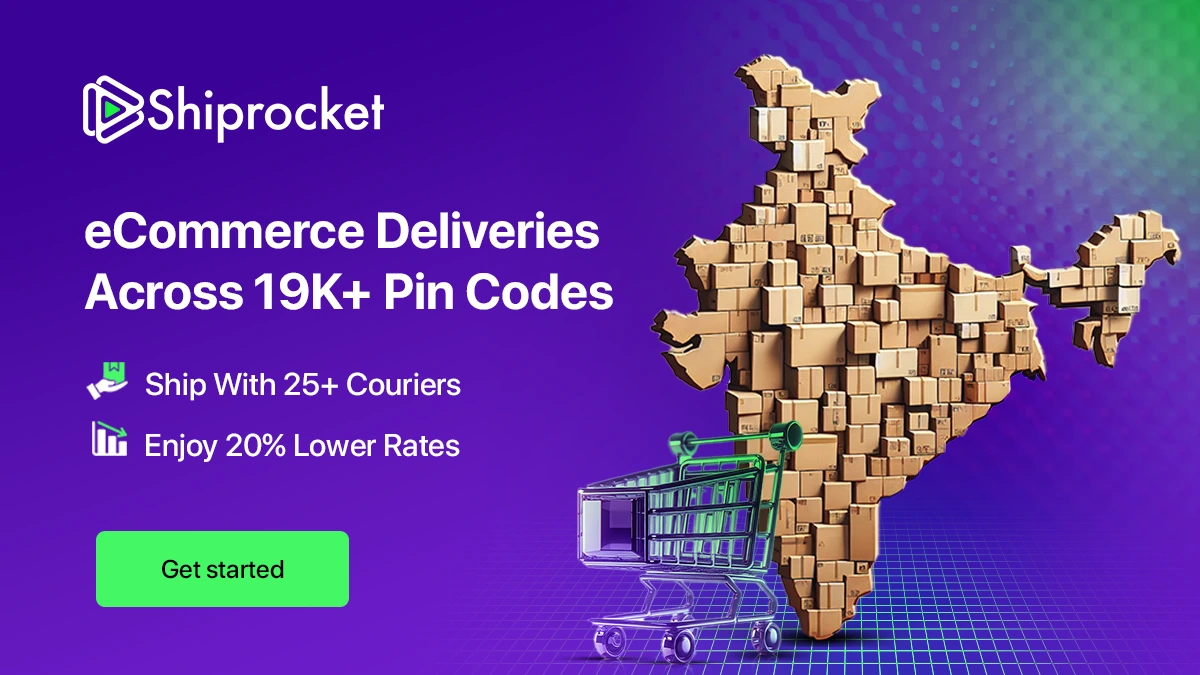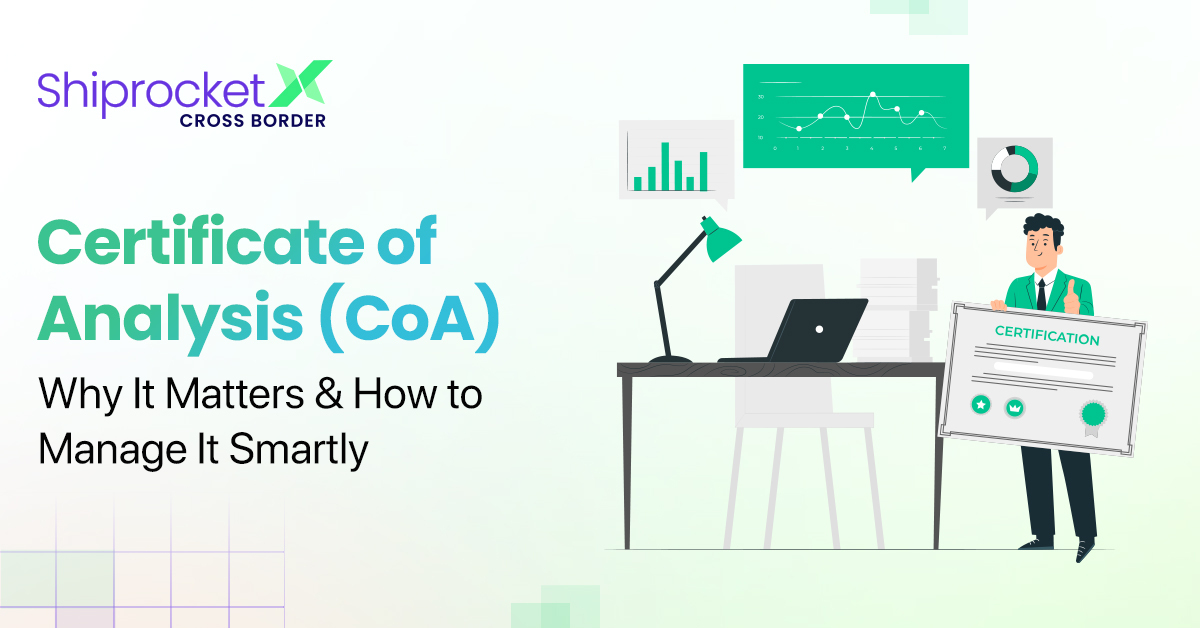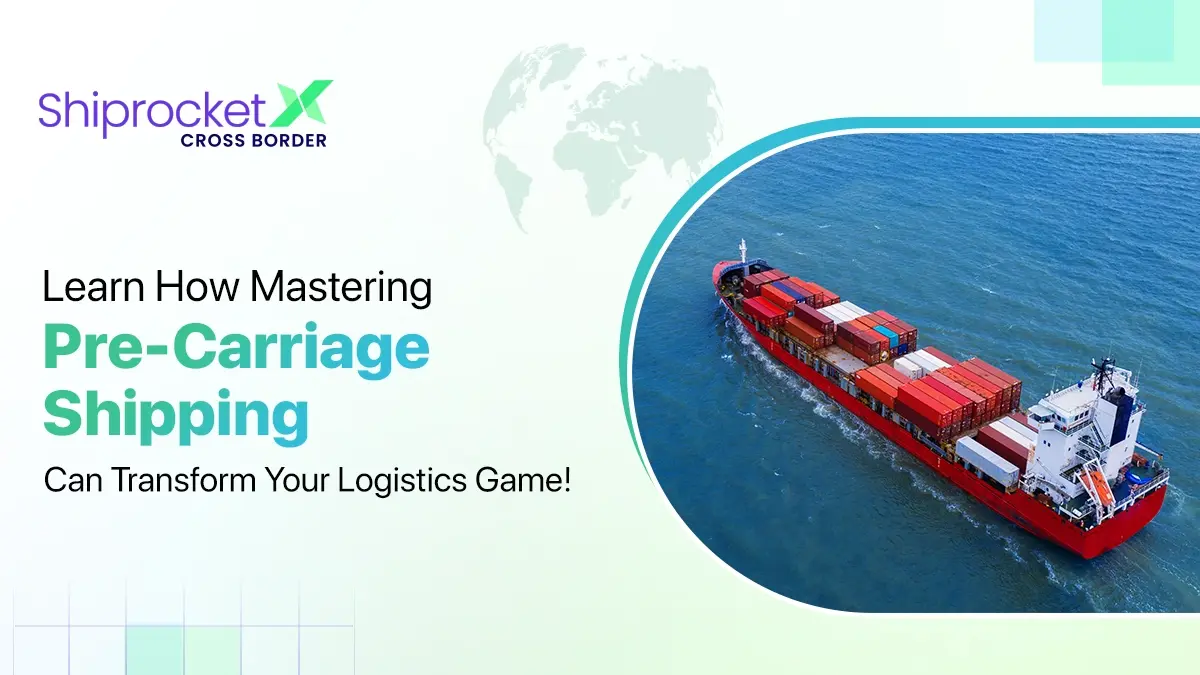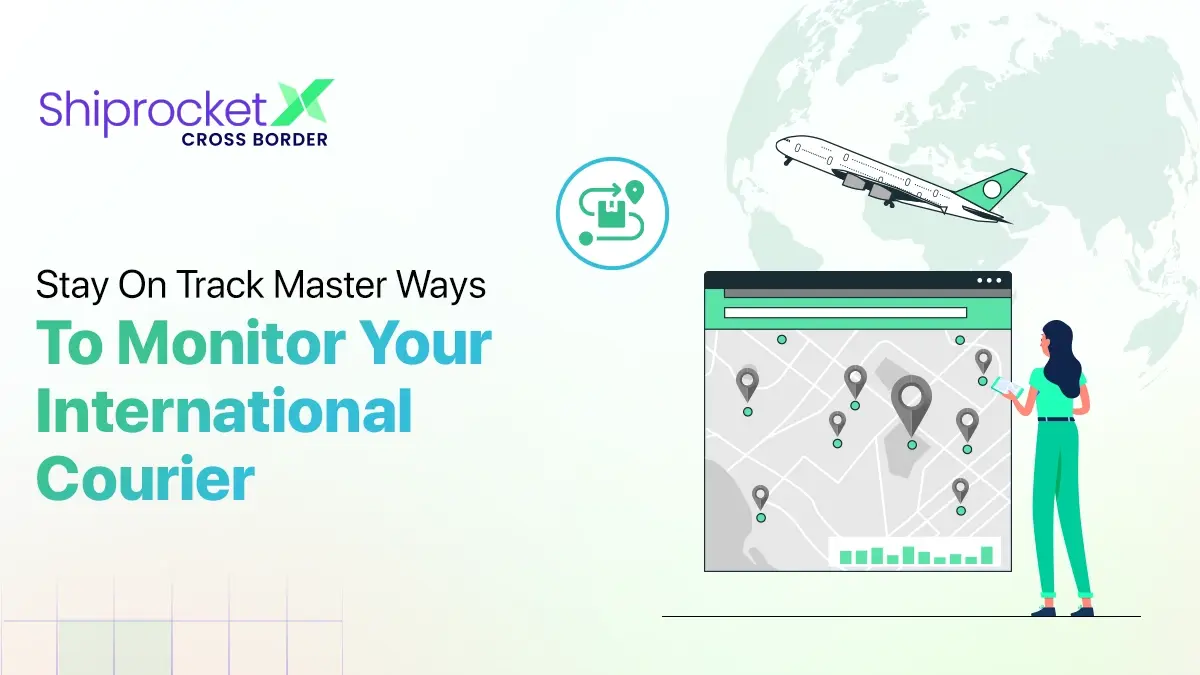What is Recommerce? Benefits, Examples & Business Models
- The Growing Influence of Recommerce
- Brands Embracing Recommerce: Notable Examples
- The Business Advantages of Recommerce
- Various Models of Recommerce: Options for Your Business
- Essential Factors to Evaluate Before Starting with Recommerce
- Shiprocket: Revolutionising Recommerce with Seamless Shipping Solutions
- Conclusion
Recommerce, or resale markets, is an emerging trend with significant benefits for businesses and the environment. This approach addresses problems caused by unsustainable practices by reducing carbon footprints and waste, cutting costs, and creating new revenue opportunities. Despite its growing popularity, many brands and online stores are unaware of what recommerce offers.
Recommerce involves various strategies for giving products a second life, including secondhand marketplaces where pre-owned goods are bought and sold, trade-in programs that offer credit for used items, and refurbished goods that combine affordability with reliability. This article will delve into what is recommerce, its benefits, and real-world examples of companies that have successfully adopted it.
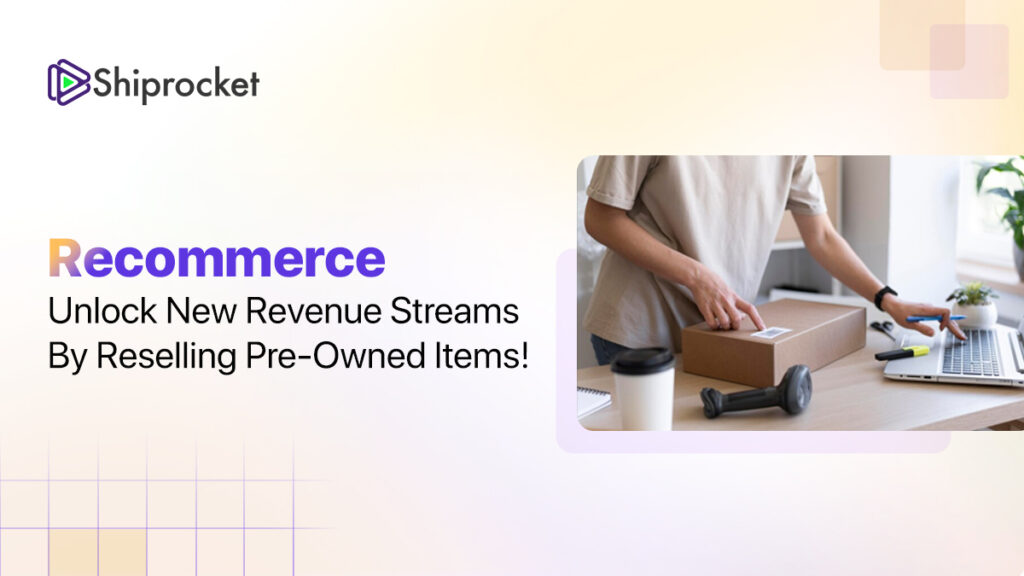
The Growing Influence of Recommerce
What is recommerce? Recommerce, or the practice of selling used, refurbished, or second-hand goods online, is gaining popularity. This concept might sound familiar because second-hand stores have always been part of commerce. However, the rise of online platforms has brought a fresh perspective to this age-old practice.
Online marketplaces have long enabled the sale of used items, and dedicated customer-to-customer (C2C) sites offer specialised spaces for people to buy and sell second-hand goods.
Recently, brands and manufacturers are recognising the potential of recommerce and are incorporating it into their business models. The increasing popularity of recommerce is fueled by its benefits of cost savings and positive environmental impact. What was formerly thought of as a last option is now thought of as a wise, sustainable decision. Recent data indicates that 90% of consumers bought used goods as part of recommerce in the previous year. The worldwide market for used goods is expected to reach USD 350 billion by 2028.
On a larger scale, recommerce involves recycling products that are still useful, offering an affordable alternative to new purchases. On a more detailed level, recommerce can encompass a wide range of items. From high-end luxury goods to construction equipment and collectables, recommerce offers diverse possibilities. Products can vary from those that are heavily used to nearly new or even upcycled items, where old products are creatively repurposed, like turning glass bottles into decorative planters. Recommerce is transforming perceptions of buying and selling.
Brands Embracing Recommerce: Notable Examples
A few examples to consider to understand its growing popularity:
- Levi’s India
Levi’s, the iconic jeans brand, has dedicated a section of its Indian website to selling pre-owned garments. This move caters to a significant market of vintage clothing enthusiasts. Previously, these loyal customers often had to navigate secondary markets, where they faced issues such as counterfeit products. By creating a dedicated space for second-hand items on their main website, Levi’s has streamlined the buying and selling process, making it easier for customers to find authentic, pre-loved Levi’s apparel.
- Back Market
Back Market is a specialised marketplace for refurbished electronics, including smartphones, laptops, and other gadgets. This platform focuses on offering certified refurbished products, as well as items from overstocks. By ensuring high quality and providing warranties, Back Market addresses common concerns about buying used tech products, making it a trusted option for reliable and affordable electronics.
- Flipkart’s 2GUD
Flipkart, one of India’s largest eCommerce platforms, has launched 2GUD, a marketplace specifically for refurbished electronics. This platform features a range of certified refurbished gadgets, including smartphones, laptops, and accessories, at lower prices than new items. By providing quality-checked products with warranties, Flipkart’s 2GUD caters to consumers looking for cost-effective alternatives while ensuring they receive dependable electronics.
- Mynta’s Pre-Loved Collection
Myntra, a major Indian fashion eCommerce platform, has introduced a “Pre-Loved” collection that features second-hand clothing and accessories. This initiative aligns with Myntra’s commitment to sustainability and offers shoppers the opportunity to purchase high-quality, pre-owned fashion items at reduced prices. By integrating these products into their main platform, Myntra caters to the growing demand for eco-friendly and budget-conscious fashion choices.
The Business Advantages of Recommerce
Recommerce offers a way for businesses to lower costs, reduce waste, and increase revenue. Companies can reduce their environmental impact by reusing and reselling products instead of relying only on new production. Let’s look at the key advantages recommerce brings to businesses.
- Sustainability Made Simple: Switching to a circular business model is far more sustainable than traditional methods. Instead of manufacturing only raw materials, you extend the life of existing products. This means fewer resources like energy, water, and materials are used, and the environmental impact is lower. Reselling an existing product generates far less carbon dioxide than creating a brand-new one. For companies, recommerce is an opportunity to do better for the planet while meeting customer demand.
- Reducing Waste: Recommerce helps reduce waste by giving products a second life. Items that may have been returned, slightly damaged, or simply unwanted can be repaired or refurbished and sold again. Research shows that 62% of used clothing ends up in household waste. Instead of heading to landfills, these products can find a new home with someone else. By selling pre-loved goods, businesses can cut down on waste.
- Saving Costs: Recommerce is also a cost-effective strategy. Selling pre-owned or refurbished items often comes with lower margins, but the savings on production costs make up for it. You aren’t investing in new manufacturing, so your expenses are lower. Take Apple, for example; they’ve built recommerce into their business model, offering customers the chance to sell back their old devices. This not only saves costs but keeps customers loyal to the brand.
- Building a Positive Brand Image: Consumers are becoming more eco-conscious, and businesses that adopt sustainable practices stand out. By embracing recommerce, you can position your brand as environmentally friendly, which helps attract customers who want to support sustainable businesses. This builds trust and increases the perceived value of your products, both old and new.
- Tapping into New Markets: There’s a growing demand for pre-owned or refurbished goods. Competitors might fill that gap if your business doesn’t cater to this market. Adding recommerce to your sales strategy allows you to tap into this demand and serve customers looking for more affordable, sustainable options. It’s an easy way to expand your customer base and explore new revenue streams.
- Managing Inventory Better: Recommerce also helps you manage inventory more efficiently. Instead of letting returned items pile up, you can recondition and resell them. This not only recovers costs but also reduces the risk of counterfeits, as you maintain control over what goes back into the market. Plus, you can use data to make smarter decisions about which items to resell, helping to keep unsold products from going to waste.
Various Models of Recommerce: Options for Your Business
Recommerce, or the practice of reselling used items, has become an increasingly popular business model. It offers a way to extend product life cycles, attract more customers, and reduce waste. There are several models of recommerce that your business can explore. Let’s take a look at some of the key options.
1. Peer-to-Peer (P2P) Model
In the peer-to-peer model, you act as an intermediary between buyers and sellers. You don’t need to maintain inventory, as the seller handles the product directly. Your role is to provide a platform where sellers can list their items, and you manage the transaction process. The settlement typically occurs only after the buyer has received the product, ensuring secure transactions.
A well-known example of this model can be seen with companies that allow sellers to list their products using original descriptions and photos, making it easier for buyers to find and purchase. The platform often handles the logistics, including creating packing slips and processing payments between the parties. This setup is efficient for sellers looking to resell items, as well as for businesses promoting their own excess or returned stock. Customers also benefit from the ability to buy both new and pre-owned products in one convenient transaction.
There are also solutions specifically designed for online merchants. These tools allow you to quickly relist items by accessing their previous order history and uploading product details. This kind of setup integrates seamlessly with eCommerce platforms, allowing businesses to tap into the resale market while offering a user-friendly experience.
2. Own or Existing Platform
Another approach is to use your existing eCommerce website for resale products or create a separate platform entirely for these transactions. A dedicated platform can help you target specific customer segments and gather data solely for resale.
For example, some brands use their main website to sell new and second-hand items, offering customers a seamless experience. Others, however, set up separate online stores to focus exclusively on reselling, allowing them to fine-tune their marketing strategies to reach a niche audience.
Businesses using platforms like Shopify Plus can even open multiple stores, allowing them to manage new and used inventory without overlap. This helps target different buyer segments and tailor marketing campaigns accordingly.
3. Buy-Back Model
The buy-back model involves purchasing used items directly from customers. This allows you to offer store credit or other incentives, encouraging them to make new purchases. However, it does carry a certain level of risk, as you don’t always know if the item you buy back will sell again.
In this model, you can either manage the entire process in-house or work with a partner. Handling the buy-back, refurbishing, and resale yourself can be more costly, but it gives you more control over the customer experience. In return, you’re likely to build stronger, long-term relationships with your customers since they’ll have more reason to return.
If you choose to outsource the process, it can lower your costs, but you may lose some control over quality and customer satisfaction. However, regardless of how you choose to manage it, this model can boost customer loyalty and enhance your brand’s reputation for sustainability.
By choosing the right recommerce model, you can build long-term relationships with customers and open up new streams of revenue. Whether you opt for peer-to-peer, an integrated platform, or a buy-back system, recommerce offers a sustainable, customer-friendly way to grow your business.
Essential Factors to Evaluate Before Starting with Recommerce
As the retail landscape evolves, recommerce, reselling previously owned items—has become a significant trend. Before diving into this market, it’s important to evaluate several key factors to ensure a successful strategy. Here’s what you need to consider:
1. Choosing the Right Platform
Recommerce platforms vary in their focus and capabilities. Consider the following when selecting a platform:
- Specialised Resale: Some platforms focus on specific categories like fashion or electronics, providing tools to list items and connect with buyers.
- Local Transactions: Platforms that support local sales can help reduce shipping costs and delivery times, making transactions quicker and more convenient.
Selecting the right platform can enhance your reach and streamline the selling process.
2. Evaluating Key Market Players
The recommerce market is supported by various key players, each offering unique benefits:
- Broad Categories: Some platforms cater to a wide range of product categories, from electronics to collectables.
- Certified Refurbished Products: Some platforms offer certified refurbished items, adding a layer of trust and assurance.
- Fashion and Vintage: Certain platforms excel in fashion resale or vintage items, appealing to specific customer segments.
- Custom Stores: Platforms that allow for custom online stores enable you to tailor your offerings and brand experience.
These platforms ensure secure transactions and authenticity, which are crucial for building customer trust.
3. Focusing on Sustainability
Recommerce promotes sustainability by extending the lifecycle of products and reducing waste. By reselling items, you lower the need for new production, which reduces raw material consumption and greenhouse gas emissions. This practice supports the circular economy, aiming for zero waste by keeping items in use longer and out of landfills.
4. Understanding Economic Impacts
Recommerce has notable economic effects on the retail sector:
- Market Growth: The recommerce market is expanding due to increased consumer demand for affordable and sustainable products.
- Revenue Streams: Opportunities include direct sales, rentals, and subscriptions, providing diverse revenue options.
- Retail Adaptation: Traditional retailers are incorporating recommerce into their operations, either by launching reselling platforms or partnering with existing ones.
Managing secondhand products effectively is essential for maintaining quality and customer trust.
5. Recognising Consumer Behaviour
Sustainable and ethical consumption are becoming increasingly popular among consumers. Key demographic groups, such as Millennials and Generation Z, are particularly influential. They value high-quality, secondhand items and are guided by social media and peer recommendations. Understanding these preferences can help tailor your recommerce strategy to meet customer expectations.
6. Managing Logistics
Handling secondhand goods presents specific logistical challenges:
- Inventory Management: Inspect and categorise items based on their condition. Use technology to automate inventory and quality control processes.
- Handling Returns and Repairs: Develop efficient processes for managing returns and repairs to maintain inventory value and support sustainability efforts.
7. Implementing a Recommerce Strategy
To successfully launch a recommerce program, consider the following steps:
- Assess Product Value and Demand: Identify which products are in demand and how to source them effectively.
- Establish Trust: Use a grading scale to categorise items by condition and ensure high-quality standards.
- Manage Supply Chain and Quality Control: Develop a system for sourcing, pricing, and managing inventory. Factor in restoration costs when setting prices.
- Integrate with Retail Operations: Ensure your recommerce program integrates smoothly with existing systems, including pricing and online listings.
- Promote Your Program: Utilise marketing strategies such as social media, email, and in-store promotions to raise awareness and engage customers.
By carefully evaluating these factors, you can implement a successful recommerce strategy that aligns with your business goals and meets the demands of today’s environmentally conscious consumers.
Shiprocket: Revolutionising Recommerce with Seamless Shipping Solutions
Imagine you’re running a recommerce business, where you sell pre-owned or refurbished items. Shiprocket can make your shipping process smooth and efficient, which is crucial in this industry. With Shiprocket, you get all the tools you need to handle everything from managing orders to offering fast delivery options. Its services cover both domestic and international shipping, so you can reach customers no matter where they are.
Shiprocket’s network includes over 24,000 pin codes, meaning you can deliver even to remote areas. They also offer features like automated marketing and faster checkout processes to help boost customer satisfaction and keep buyers coming back. Plus, their platform easily connects with your existing systems, making it simple to integrate into your business. Essentially, Shiprocket takes care of the shipping challenges, so you can focus on growing your recommerce business.
Conclusion
Recommerce, or resale markets, is all about selling used items that are still in good condition. Instead of throwing things away or letting them sit unused, these products get a second chance with new buyers.
For you as a seller, this means you can attract customers who are looking for good deals and want to buy items at lower prices. It’s also a smart way to handle excess inventory and reduce waste. By participating in recommerce, you’re not just making extra sales; you’re also supporting a more sustainable approach by giving items a new home instead of letting them go to waste.
Recommerce is a practical and eco-friendly opportunity. It helps you reach new customers and contributes to a greener environment. Embracing it can be advantageous for both your business and the planet.


